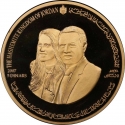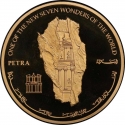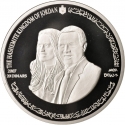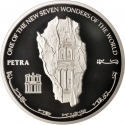You are about to finish your registration. Please check your mailbox (including spam folder). There should be a letter with a confirmation link. Check setting to make sure that your e-mail address is correct.
Send letter againDescription
Petra earned recognition as one of the New 7 Wonders of the World in 2007 and was highlighted by the Smithsonian Magazine as one of the “28 Places to See Before You Die.”
Petra, originally known as Raqmu or Raqēmō in Nabataean, is a renowned historic and archaeological city located in southern Jordan. Its fame stems from its impressive rock-cut architecture and sophisticated water conduit system. Referred to as the "Rose City" due to the hue of its sandstone, Petra was famously described as "a rose-red city half as old as time" by John Burgon in 1845. Situated near the mountain of Jabal Al-Madbah, Petra lies within a basin encircled by mountains on the eastern side of the Arabah valley, stretching from the Dead Sea to the Gulf of Aqaba. Access to Petra is through the picturesque 1.2-kilometer-long gorge known as the Siq, leading directly to the iconic Khazneh.
Abdullah II bin Al-Hussein (born 30 January 1962) has been King of Jordan since 1999 upon the death of his father King Hussein. Abdullah is considered to be the 41st generation direct descendant of the Islamic Prophet Muhammad, through his belonging to the ancient Hashemite family, which has ruled Jordan since 1921.
Obverse

|
Depicts a conjoined busts of King Abdullah II bin Al-Hussein and Queen Rania, facing three-quarters left surrounded by the texts "His Majesty King Abdullah and Queen Rania" in Arabic and English below, "The Hashemite Kingdom of Jordan" in Arabic and English above. Denomination and date in Arabic and English on both sides. Positioned above is the coat of arms of Jordan. THE HASHEMITE KINGDOM OF JORDAN المملكة الأردنية الهاشمية |
|---|---|
Reverse

|
Depicts a part of Al-Khazneh in Petra engraved in mountains in the middle with a logo of Petra below on the left surrounded by the inscription in English above and Arabic below. ONE OF THE NEW SEVEN WONDERS OF THE WORLD |
| Edge |
Related coins
Petra as One of the New Seven Wonders of the World
Petra as One of the New Seven Wonders of the World





